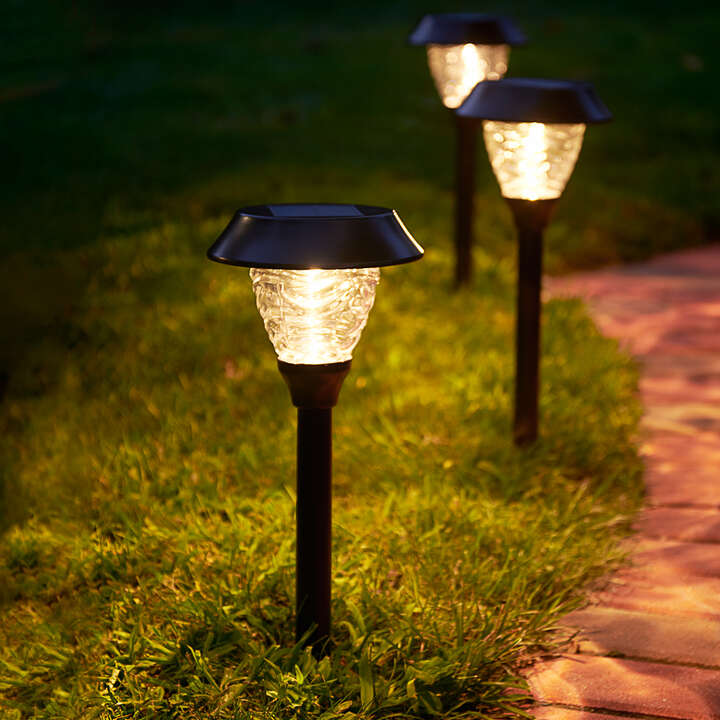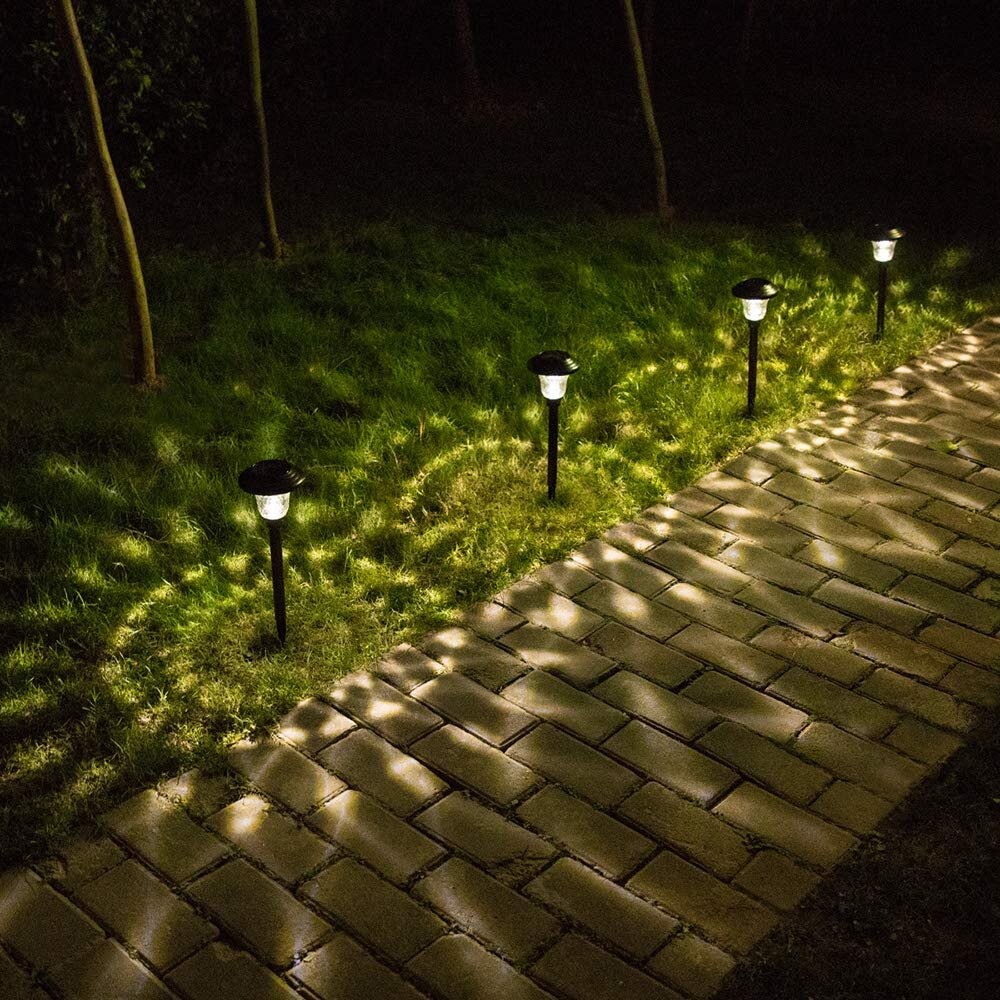Many U.S. states have concluded that solar, wind and other renewable energy sources may not be enough to maintain electricity supply as they seek to drastically reduce their use of fossil fuels
PROVIDENCE, R.I. — As climate change pushes U.S. states to slash their use of fossil fuels, many have concluded that solar, wind and other renewable energy sources may not be enough to keep things going.
As countries transition away from coal, oil and gas to reduce greenhouse gas emissions and avoid the worst impacts of a warming planet, nuclear power is emerging as the solution to fill the void.The renewed interest in nuclear energy comes as companies including Microsoft founder Bill Gates are developing smaller, cheaper reactors to supplement the power grids in communities across the U.S.
solar path lights
Nuclear power has its own set of potential problems, especially radioactive waste that could remain dangerous for thousands of years.But proponents say the risks can be minimized, and energy is critical to stabilizing power supplies as the world tries to wean itself off carbon dioxide-emitting fossil fuels.
Jeff Lyash, president and CEO of the Tennessee Valley Authority, put it simply: There is no significant reduction in carbon emissions without nuclear power.
“At this point in time, I don’t see a path that will get us there without keeping the current fleet and building new nuclear facilities,” Lyash said.”That’s after maximizing the amount of solar energy we can build into the system.”
TVA is a federally owned utility that provides electricity to seven states and is the third largest electricity generator in the United States.It will add about 10,000 megawatts of solar power by 2035—enough to power nearly 1 million homes a year—and also operates three nuclear power plants and plans to test a small reactor in Oak Ridge, Tennessee.By 2050, it hopes to achieve net-zero emissions, meaning no more greenhouse gases are produced than are removed from the atmosphere.
An Associated Press survey of energy policy in all 50 states and the District of Columbia found that an overwhelming majority (about two-thirds) believe nuclear energy will help replace fossil fuels in one way or another.The momentum behind nuclear power could lead to the first expansion of nuclear reactor construction in the United States in more than three decades.
About one-third of states and the District of Columbia responding to the AP survey said they had no plans to include nuclear power in their green energy goals, relying heavily on renewable energy.Energy officials in those states say their goals are achievable because of advances in battery energy storage, investments in interstate high-voltage transmission grids, reduced demand from hydroelectric dams and energy efficiency efforts for electricity.
solar path lights
U.S. states’ divisions over nuclear power mirror similar debates unfolding in Europe, with countries including Germany phasing out their reactors and others, such as France, sticking with the technology or planning to build more.
The Biden administration, which has sought to take aggressive steps to reduce greenhouse gas emissions, argues that nuclear energy could help compensate for the decline in carbon-based fuels in the U.S. energy grid.
U.S. Energy Secretary Jennifer Granholm told The Associated Press that the government wants to achieve zero-carbon electricity, “which means nuclear, which means hydro, which means geothermal, which obviously means wind and offshore wind, which means solar. .”
“We want it all,” Granholm said during a visit to Providence, Rhode Island, in December to promote the offshore wind project.
The $1 trillion infrastructure package Biden backed and signed into law last year would allocate about $2.5 billion for advanced reactor demonstration projects.The Department of Energy said research from Princeton University and the U.S. Decarbonization Research Initiative showed that nuclear energy is necessary to achieve a carbon-free future.
Granholm also touted new technologies involving hydrogen and the capture and storage of carbon dioxide before it is released into the atmosphere.
Nuclear reactors have operated reliably and carbon-free for decades, and the current climate change conversation brings the benefits of nuclear energy to the forefront, said Maria Kornick, president and CEO of the Nuclear Energy Association.
“The scale of this grid across the United States, it needs something that’s always there, and it needs something that can really be the backbone of this grid, if you will,” she said.”That’s why it works with wind, solar and nuclear.”
Edwin Lyman, director of nuclear power safety at the Union of Concerned Scientists, said nuclear technology still had significant risks that other low-carbon energy sources did not.While new, smaller reactors may cost less to build than conventional reactors, they also generate more expensive electricity, he said.He also worries that the industry may cut corners on safety and security to save money and compete in the market.The group is not against the use of nuclear power, but wants to make sure it is safe.
“I’m not optimistic that we’ll see proper safety and security requirements that would make me comfortable with the adoption or deployment of these so-called small modular reactors across the country,” Lyman said.
The U.S. also has no long-term plans to manage or dispose of hazardous waste that could be in the environment for hundreds of thousands of years, and both the waste and the reactor are at risk of accidents or targeted attacks, Lyman said.The 2011 nuclear disasters at Three Mile Island, Pennsylvania, Chernobyl, and more recently, Fukushima, Japan, provided a lasting warning of the dangers.
Nuclear power already provides about 20 percent of America’s electricity and about half of America’s carbon-free energy.Most of the country’s 93 operating reactors are located east of the Mississippi River.
In August 2020, the Nuclear Regulatory Commission approved only one new small modular reactor design – from a company called NuScale Power.Three other companies have told the committee they plan to apply for their designs.All use water to cool the core.
The NRC is expected to submit designs for about half a dozen advanced reactors that use substances other than water to cool the core, such as gas, liquid metal or molten salt.These include a project by Gates’ company TerraPower in Wyoming, the largest coal-producing state in the United States.It has long relied on coal for power and jobs and ships it to more than half of the states.
As utilities exit coal, Wyoming is harnessing wind energy and installed the third-largest wind capacity of any state in 2020, behind only Texas and Iowa.But Glenn Murrell, executive director of the Wyoming Department of Energy, said it’s unrealistic to expect all of the nation’s energy to be supplied entirely by wind and solar.Renewable energy should work in tandem with other technologies such as nuclear and hydrogen, he said.
TerraPower plans to build its advanced reactor demonstration plant in Kemmerer, a town of 2,700 people in western Wyoming, where a coal-fired power plant is shutting down.The reactor uses sodium technology, a sodium-cooled fast reactor with an energy storage system.
In West Virginia, another coal-dependent state, some lawmakers are trying to repeal the state’s moratorium on building new nuclear facilities.
A second TerraPower-designed reactor will be built at the Idaho National Laboratory.The molten chloride reactor experiment will have a core as small as a refrigerator and molten salt to cool it instead of water.
Among other countries that support nuclear power, Georgia insists that its nuclear reactor expansion will “provide Georgia with sufficient clean energy” for 60 to 80 years.Georgia has the only nuclear project under construction in the US — expanding the Vogtle plant from two traditional large reactors to four.The total cost is now more than double the $14 billion originally forecast, and the project is years behind schedule.
New Hampshire says the region’s environmental goals cannot be achieved affordably without nuclear power.The Alaska Energy Authority has been planning the use of small modular nuclear reactors since 2007, possibly first at remote mines and military bases.
The Maryland Energy Authority said that while all renewable energy targets are laudable and costs are falling, “for the foreseeable future, we will need a variety of fuels,” including nuclear and cleaner natural gas powertrains, to ensure reliability and elasticity.There is a nuclear power plant in Maryland, and the Energy Administration is in talks with a manufacturer of small modular reactors.
Other officials, mostly in Democratic-led states, say they are moving beyond nuclear power.Some say they didn’t rely heavily on it from the start and don’t think it’s needed in the future.
Compared with installing wind turbines or solar panels, the cost of new reactors, safety concerns and unresolved questions about how to store hazardous nuclear waste are deal breakers, they say.Some environmentalists are also opposed to small modular reactors due to safety concerns and hazardous waste concerns.The Sierra Club described them as “high risk, high cost and highly suspicious”.
New York State has the most ambitious climate change goals in the nation, and the energy grid of the future will be dominated by wind, solar and hydroelectric power, said Doreen Harris, president and CEO of the New York State Energy Research and Development Authority.
Harris said she sees a future beyond nuclear, down from nearly 30% of the state’s energy mix today to around 5%, but the state will need advanced, long-lasting battery storage and perhaps cleaner alternatives like hydrogen fuel.
Nevada is particularly sensitive to nuclear energy after a failed plan to store the state’s commercial spent nuclear fuel in Yucca Mountain.Officials there do not see nuclear energy as a viable option.Instead, they see potential in battery technology for energy storage and geothermal energy.
“Nevada understands better than most other states that nuclear technology has significant lifecycle issues,” David Bozien, director of the Nevada Governor’s Office of Energy, said in a statement.”Focusing on short-term gains doesn’t alleviate nuclear’s long-term problems.”
California plans to close its last remaining nuclear power plant, Diablo Canyon, in 2025 as it switches to cheaper renewable energy to power its grid by 2045.
According to the state, officials believe that if California maintains the expansion of clean power generation at a “record rate over the next 25 years,” or building an average of 6 gigawatts of new solar, wind and battery storage resources annually, officials believe they can achieve this goal.planning document.California also imports electricity produced in other states as part of the western U.S. grid system.
Skeptics question whether California’s comprehensive renewable energy plan will work in a state of nearly 40 million people.
Delaying the retirement of Diablo Canyon until 2035 would save California $2.6 billion in electricity system costs, reduce the chance of blackouts and lower carbon emissions, research by scientists at Stanford University and MIT concluded.When the study was released in November, former U.S. Energy Secretary Steven Chu said the U.S. was not ready for 100 percent renewable energy anytime soon.
“They’ll be when the wind doesn’t blow and the sun doesn’t shine,” he said.”And we’re going to need some power that we can turn on and dispatch at will. That leaves two options: fossil fuels or nuclear.”
But the California Public Utilities Commission said that beyond 2025, Diablo Canyon could require “seismic upgrades” and changes to cooling systems that could cost more than $1 billion.Commission spokeswoman Terrie Prosper said 11,500 megawatts of new clean energy resources will come online by 2026 to meet the state’s long-term needs.
Jason Bordorf, co-founding dean of the Columbia Climate Institute, said that while California’s plan is “technically feasible,” he is skeptical because of the challenges of building so much renewable power generation capacity quickly. sex.Bordoff said there are “good reasons” to consider extending the life of Dark Canyon to reduce energy costs and reduce emissions as quickly as possible.
“We must incorporate nuclear energy in a way that acknowledges that it is not without risks. But the risks of failing to meet our climate goals outweigh the risks of incorporating nuclear into a zero-carbon energy mix,” he said.
Post time: Jan-22-2022






